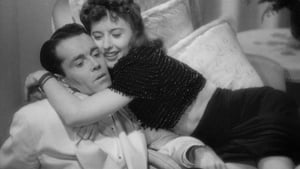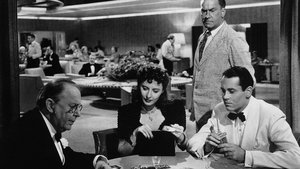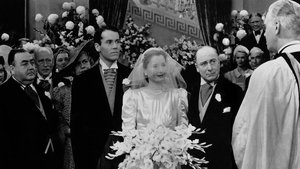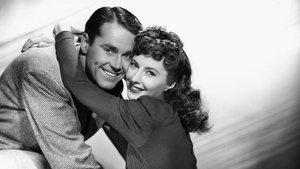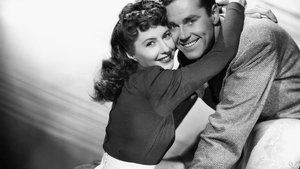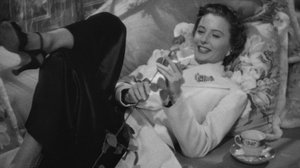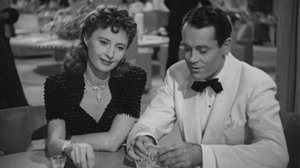Contact: info@alwanfilm.com
Video Sources 0 Views
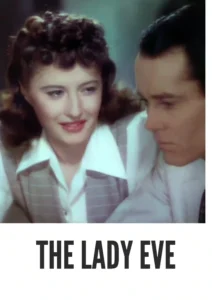
Synopsis
The Lady Eve 1941 Colorized Review: A Classic Screwball Comedy

Introduction
Released in 1941, The Lady Eve is a quintessential screwball comedy that showcases the genius of director Preston Sturges and the undeniable chemistry between its stars, Barbara Stanwyck and Henry Fonda. Set against the backdrop of the American upper class and the world of high society, the film is a delightful blend of romance, wit, and humor that has stood the test of time. This review will explore the film’s impact on the genre, the intricacies of its plot and characters, and its significance within the context of 1940s cinema, particularly focusing on how Sturges’ unique directorial style influenced the screwball comedy genre.
Check The Full Colorized Movies List
Check Our Colorized Movies Trailer Channel
Understanding The Lady Eve 1941 Colorized: Director, Cast, and Genre
Director’s Vision
Preston Sturges was a visionary director known for his sharp wit and keen understanding of social dynamics. In The Lady Eve, he masterfully crafted a screenplay that not only entertained but also provided astute commentary on class and gender dynamics. Sturges employed his signature blend of rapid-fire dialogue and absurd situations to create a comedic masterpiece that resonates with audiences to this day. His direction allowed for a seamless interplay between the comedic elements and the romantic storyline, making the film a standout in the screwball genre.
The Iconic Performance of Actors
At the heart of The Lady Eve is Barbara Stanwyck, who delivers a tour-de-force performance as the cunning and charismatic con artist, Jean Harrington. Stanwyck’s ability to balance humor with seduction is nothing short of captivating, as she navigates the complexities of her character with ease. Opposite her, Henry Fonda plays the naive and charming millionaire, Charles Pike. Fonda’s portrayal of the earnest but bumbling Charles adds to the film’s comedic tension, creating a dynamic that is both humorous and endearing.
The chemistry between Stanwyck and Fonda is palpable, making their romantic entanglements feel genuine and engaging. Their performances, coupled with Sturges’ sharp dialogue, elevate the film and contribute to its status as a classic.
Exploring the Genre
Screwball comedy, a genre that emerged in the 1930s and thrived in the 1940s, is characterized by its light-hearted tone, fast-paced dialogue, and zany characters. The Lady Eve is a quintessential example of this genre, blending romance and humor with social commentary. The film employs elements such as mistaken identities, absurd situations, and witty banter, all hallmarks of screwball comedy.
Sturges’ ability to intertwine these elements with a strong narrative makes The Lady Eve a benchmark for future romantic comedies, influencing filmmakers for generations to come.
Exploring the World of The Lady Eve 1941 Colorized: Plot and Characters
Detailed Synopsis
The Lady Eve opens with the introduction of Charles Pike, a wealthy and innocent heir to a brewery fortune who is on an expedition to the Amazon rainforest to study snakes. During his trip, he encounters Jean Harrington and her father, who are con artists planning to swindle Charles out of his fortune. Jean, initially posing as a damsel in distress, quickly devises a plan to win Charles’ heart and subsequently rob him of his wealth.
As the plot unfolds, Jean’s elaborate schemes lead to comedic misadventures, including a masquerade of identities and a series of misunderstandings that culminate in a whirlwind romance. The film reaches its peak when Jean’s true identity is revealed, prompting Charles to confront his feelings and the reality of their relationship.
The film is filled with memorable moments, such as the iconic scene in which Jean changes her appearance and identity, showcasing her transformation from the alluring con artist to the more refined lady. The supporting characters, including Jean’s father, played by Eugene Pallette, add depth to the story and contribute to the film’s comedic elements.
The Art of Screwball Comedy
Understanding the Elements
Screwball comedies like The Lady Eve often utilize a specific set of characteristics that define the genre. These include:
- Fast-paced Dialogue: The witty repartee between characters is a staple of screwball comedies, creating a rhythm that keeps audiences engaged.
- Strong Female Protagonists: Often, the female lead is portrayed as clever, resourceful, and independent, challenging traditional gender roles. Jean Harrington exemplifies this, as she skillfully manipulates her way through social situations while maintaining her charm.
- Absurd Situations: The comedic conflicts often arise from improbable circumstances, leading to a series of misunderstandings that propel the plot forward.
- Romantic Tension: The romantic relationship between the leads is fraught with tension and misunderstanding, often leading to comedic clashes before they ultimately find resolution.
The Lady Eve 1941 Colorized and Its Cultural Context
The Importance of 1940s Cinema
Released during World War II, The Lady Eve reflects the cultural landscape of the 1940s. The film’s humor and lightheartedness provided a welcome escape for audiences facing the realities of wartime life. Screwball comedies became increasingly popular during this period, as they offered a sense of normalcy and an opportunity to laugh amid global turmoil.
Sturges’ film is not only a product of its time but also a commentary on the societal changes occurring in America. As women increasingly took on roles outside the home, characters like Jean Harrington exemplified the new modern woman—independent, witty, and unafraid to assert herself in a male-dominated society.
The Debate Over Gender Dynamics in The Lady Eve 1941 Colorized
Examining Gender Roles
The Lady Eve presents a fascinating exploration of gender dynamics. Jean Harrington is portrayed as a strong and intelligent woman who defies traditional gender roles. Her cunning nature and ability to manipulate situations challenge the notion of women as mere romantic interests, positioning her as an equal counterpart to Charles Pike.
The film raises questions about the power dynamics in relationships, as Jean uses her charm and wit to navigate her interactions with Charles. While she initially appears to be in a position of control, the evolving nature of their relationship complicates this dynamic. As Charles begins to assert himself, the film ultimately presents a more nuanced view of gender equality.
The Legacy of The Lady Eve 1941 Colorized
Influence on Future Comedies
The Lady Eve has had a lasting impact on the romantic comedy genre, influencing countless filmmakers in the decades that followed. The film’s witty dialogue, strong characters, and clever plotting set a standard for future romantic comedies. Its legacy can be seen in films such as When Harry Met Sally (1989) and Bridget Jones’s Diary (2001), which incorporate similar themes of romance, misunderstandings, and comedic tension.
Sturges’ innovative approach to storytelling and character development paved the way for a new wave of romantic comedies that embraced the complexities of relationships while maintaining a sense of humor.
Themes Explored in The Lady Eve 1941 Colorized
Deception, Identity, and Class
The Lady Eve delves into themes of deception and identity, as characters navigate a world of pretense and facades. Jean’s initial deception of Charles raises questions about authenticity and trust in relationships. The film explores the tension between social classes, highlighting the disparity between Charles’ wealth and Jean’s lower-class status as a con artist.
The exploration of these themes adds depth to the comedic narrative, encouraging viewers to consider the implications of deception and the nature of human relationships.
Reception and Legacy of The Lady Eve 1941 Colorized
Critical Acclaim and Audience Reception
Upon its release, The Lady Eve received widespread critical acclaim for its sharp writing, stellar performances, and Sturges’ direction. Critics praised the film for its clever humor and engaging storyline, recognizing it as one of the best comedies of the era. Audiences were equally captivated by the film’s charm, leading to its status as a classic.
The film has continued to resonate with audiences over the years, earning a place in the pantheon of great American comedies. It has been preserved and restored, allowing new generations to experience its brilliance.
Where to Watch The Lady Eve 1941 Colorized Online
For those interested in experiencing the charm of The Lady Eve (1941), the film is widely available on various streaming platforms. Services such as Amazon Prime Video, Criterion Channel, and TCM offer the film for viewing, both in its original format and as part of curated collections celebrating classic cinema. Additionally, physical media formats such as DVD and Blu-ray are readily available for purchase.
FAQs About The Lady Eve 1941 Colorized
Q: Who directed The Lady Eve?
A: The Lady Eve was directed by Preston Sturges, a prominent filmmaker known for his work in screwball comedies and innovative storytelling.
Q: What are the main themes explored in the film?
A: The film explores themes of deception, identity, and class, examining the complexities of relationships and societal norms.
Q: How did The Lady Eve influence future romantic comedies?
A: The Lady Eve set a standard for romantic comedies with its witty dialogue, strong characters, and intricate plot, influencing filmmakers for decades.
Q: Who stars in The Lady Eve?
A: The film stars Barbara Stanwyck as Jean Harrington and Henry Fonda as Charles Pike, with a supporting cast that includes Eugene Pallette and William Demarest.
Conclusion
The Lady Eve (1941) remains a quintessential screwball comedy that continues to charm audiences with its sharp wit, delightful performances, and insightful commentary on gender dynamics. Preston Sturges’ direction and the stellar chemistry between Barbara Stanwyck and Henry Fonda elevate the film, making it a timeless classic in the annals of American cinema. As viewers revisit The Lady Eve, they are reminded not only of the joy of laughter but also of the intricate layers that lie beneath the surface of romantic comedy, solidifying its status as a beloved film that will endure for generations to come.
